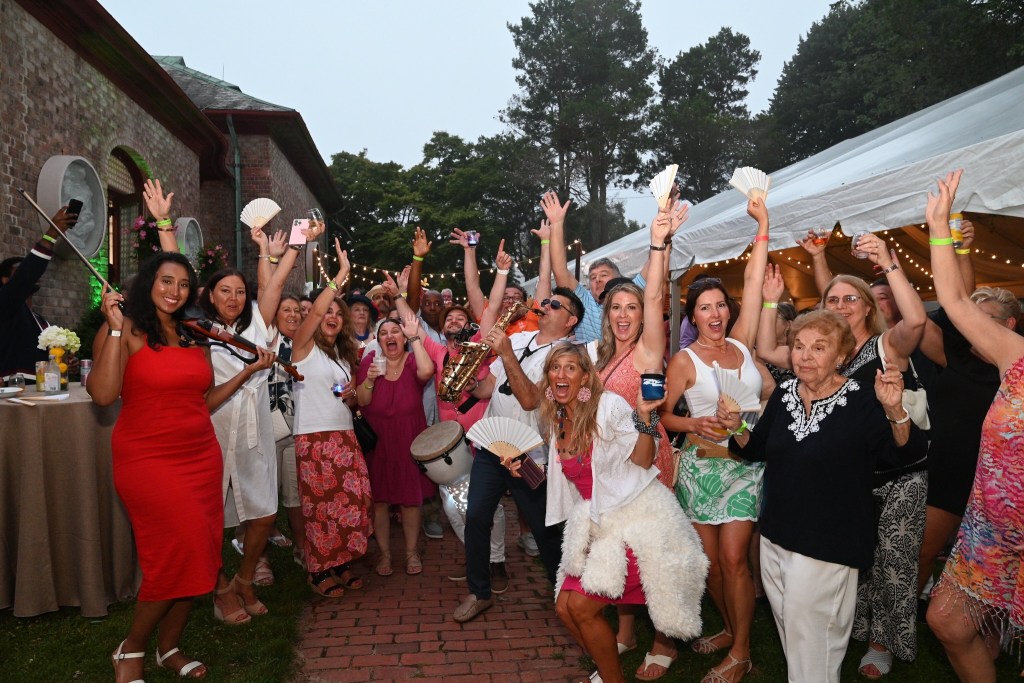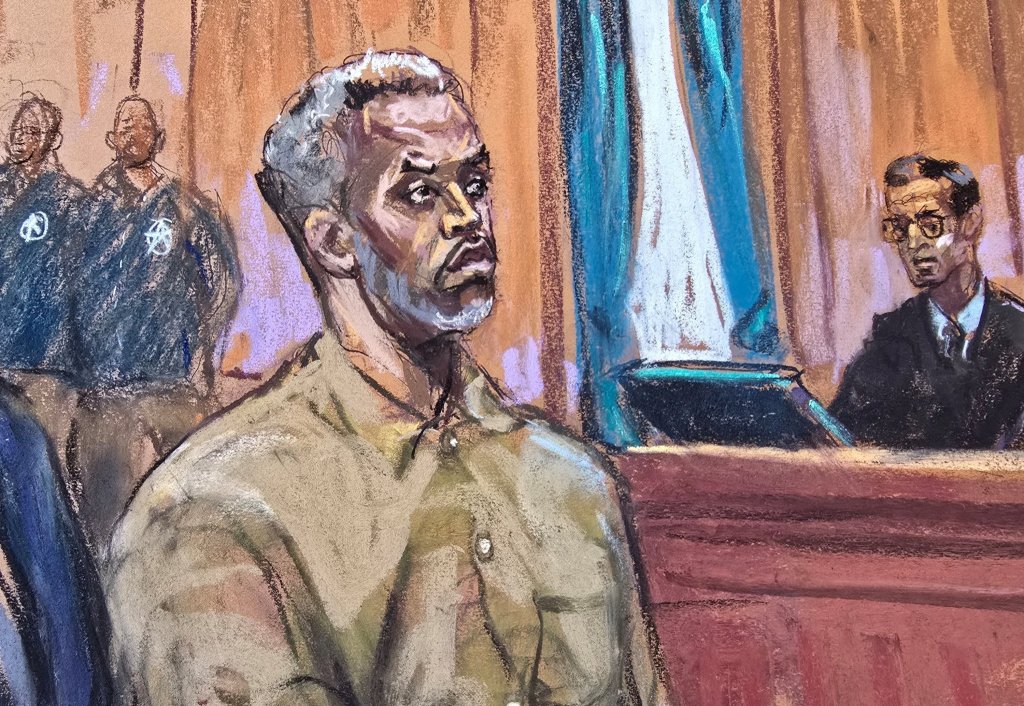Hamptons TV: How Two Brothers Built WVVH-TV & Made History

Wearing a blue shirt with the letters WVVH-TV in red, Hamptons Television in gold and a blue wave, Ernie Schimizzi sits near his brother Greg and talks television. But at this moment, that means talking tech.
Hamptons TV, the station they founded nearly 30 years ago, had just installed equipment to deliver higher quality images via fiber optics from East Hampton, where their studio is located, to Queens.
“It’s nothing that you buy off the shelf at Best Buy,” Ernie Schimizzi, president of Video Voice Inc., the owners of WVVH-TV, says. “You have to be able to deliver television in a number of ways. The original way was over the air. Then cable came in. Then the internet and streaming. You have to be able to address that need.”
The two brothers sit together soon after being inducted into the New York State Broadcasters Association Hall of Fame (joining Walter Cronkite, Barbara Walters and others) and receiving a proclamation from Suffolk County Executive Steve Bellone.
“It shows that we contributed something to the body of work which is broadcasting,” Greg Schimizzi, Video Voice Inc. chairman, says. “My brother and I single-handedly brought a New York TV station to light.”
Although few people think about independent TV stations, Hamptons TV is a rare breed and a story of how two brothers from Brooklyn built and continue to operate a local TV station in a world of massive businesses.
“There’s an evolution to make sure we’re relevant and cutting edge on the technology side,” Ernie says of how they stay current.
The Hamptons is an area often associated with Hollywood, as a second home to movie stars, directors and other celebrities.
It’s also home to WVVH or Hamptons Television, run by two brothers in an industry where names like Paley and Sarnoff are familiar. In an era of giants, they are proof that Davids do exist, survive and even adapt rather than get gobbled up by Goliaths.
They recently became a fully fledged Nielsen-rated station, a big deal for this independent station broadcasting from a 500-foot tower in Sag Harbor, hidden among trees, as well as streaming on wvvh.com.
“That means anything and everything we do is measured for ratings and reaction,” Ernie Schimizzi says. “It’s successful for us. We wouldn’t do it if it wasn’t.”
Although Hamptons TV may not have the name recognition of Netflix, it is available on Altice’s Optimum channel 78 and Verizon Fios 14 throughout the metropolitan New York market including Long Island, New York City, Connecticut, Westchester and Rockland County. But in terms of content, it has the Hamptons at its heart.
“Our identity for the Hamptons is pretty strong,” Ernie Schimizzi adds. “We’re the TV station for the Hampton Classic Horse Show and some other major events.”
They were the TV media partner for the Hampton International Film Festival in October and the media partner for the Hamptons Doc Fest November 30–December 6.
They also program around and partner with the New York Auto Show and the New York Boat show.
And during the pandemic, they not only provided information, but tried to provide a lifeline to some local businesses, providing equipment to the Stephen Talkhouse to broadcast live events.
“The beauty of television is we can go anywhere at any time and bring our message to a significant population,” Ernie says. “You’re there the moment you turn on your TV or log into us via the stream.”
They insert local programming into national shows called the Daytime Show weekdays 8–9 a.m. and noon–1 p.m. and the Daily Flash from 11 a.m.–noon.
“You have to have a structure of programming that’s 24/7,” Ernie continues. “We have a robust schedule of Outside Television programming. Surfing, rock climbing.”
Greg says viewers of their affiliate Outside Television watch experts and learn how to do various sports. “They’ll show you how to kayak or climb using repelling,” Greg says. “It develops a community of viewers.”
The idea that New York is the city that never sleeps seems to have some truth for Hamptons TV, where late-night programming is not just a throw-away.
“It’s amazing how many people watch TV at 2 o’clock in the morning,” Ernie says. “There’s a significant audience at that time.”
They also broadcast shows from the past much earlier in the day, including Bonanza weekdays at 5 p.m. and I Love Lucy at 2:30 p.m. for those seeking nostalgia or discovering classic TV.
“We find that those programs, even though they’re from the golden age of television, attract an audience,” Ernie adds.
The Schimizzis grew up in Brooklyn during what’s now often called “the golden age” of television with shows like The Honeymooners.

at NBC Studios, Rockefeller Center, 1957Courtesy WVVH
“We thought that the honeymooners lived on our block,” Greg says. “Years later, my brother and I distributed a motion picture that Jackie Gleason was in called Izzie and Moe.”
They met the star and spiritual neighbor who helped them fall in love with the medium. “It was like childhood memories came to life with the person in front of you,” Greg continues. “He was a really sweet, nice guy.”
Greg was 13 and Ernie was 11 when their father died and their mother, a dress maker who made $54 a week on average, had to provide for the family. She bought them a typewriter, then a tape recorder they used to copy records and finally a kit to assemble a color television.
“It was a million parts, picture tubes,” Greg says. “We built this TV set.”
While their aunt watched on the TV they built, the picture went fuzzy and the two boys replaced four capacitors.
“We soldered it with my aunt in the living room,” Greg says. “My aunt screamed for 20 minutes, ‘They’re going to get electrocuted!’ Nobody went behind a TV in those days.”
After a few minutes, they sealed the set and the picture returned, perfect, as they watched the program. “My aunt said, ‘I can’t believe it. They took the TV apart. I don’t know what they did,’” Greg says.
The two grew up, did various jobs, including distributing motion pictures, and then bought the license for what would become WVVH, which they launched in 1994.
“You need a strong stomach to be in the television business, to start from a piece of paper and bring a signal everybody could enjoy at home,” Greg says.
Having two people to help steer the ship helps and the two still collaborate closely, even doing what they call four-handed soldering.
“We have the ability to work very well together,” Greg adds. “When we put a piece of equipment in and it has to be soldered, we can use two sets of hands.”
As the Hamptons has changed with more full-time residents (and traffic), so has the station.

“It started out as resort television. We thought of the Hamptons as a resort community,” Ernie says. “We’ve expanded our coverage to Brentwood, Connecticut, Westchester and New York City. That has become part of what we’re about.”
Both brothers do some of the engineering, but they divide other duties. Ernie is more involved in the basic business aspect, while Greg, a former psychologist who worked for 16 years in the Veterans Administration, handles audience development.
“We can’t compete against Yellowstone on a Sunday night,” Ernie says, noting the station does reach a “demographic advertisers want to reach.” Hamptons TV skews younger with a more male audience, he says.
“Technology has made it easier,” Ernie adds, noting the technology for Queens cost tens of thousands of dollars, “but it’s an expensive road to travel.”
He calls the new Queens equipment a “major upgrade in technology” providing higher-bandwidth picture quality.
“Just as your cellphone evolved greatly in the past year or two, the same holds true for us in the evolution of television,” Ernie says. “We’re very adaptable and focused on the relevance of WVVH Hamptons TV now and in the future.”
They provide programming free on the WVVH-TV YouTube channel. “We get viewership from that,” Greg says. “That’s a body of work that attracts new eyeballs. “
While Ernie says they provide entertainment via broadcast, they take advantage of technology to level the playing field.
“The business might change over the years in a variety of ways, but we’re in the information business whatever technology that takes,” he adds.
They remain fascinated by the engineering as well as the entertainment and power of television, much as they must have when they built that color television decades ago before building a TV station.
“Wherever the technology goes, we want to be there,” Greg says. “The next step for us is two-way communication. Regular TV will have the ability of doing that. We’re interested in that.”
They also retain a local connection that may sound more at home on The Andy Griffith Show than in the world of TV stations.
A Hamptons resident who had been one of the Busby Berkeley dancers in the 1930s thanked them for broadcasting a movie she was in and asked them to rebroadcast it. They went a step further, having an employee deliver a DVD of the movie to her house.
“She was able to see herself when she was in her 20s, maybe younger. It brought back all these memories,” Greg says. “If somebody has to describe the impact of the station, that’s it. It becomes a personal encounter you have with the station.”









